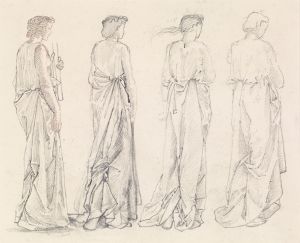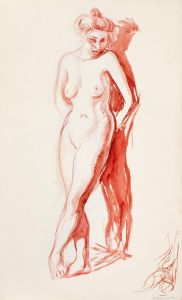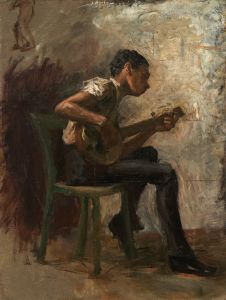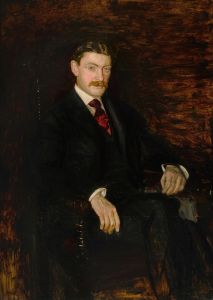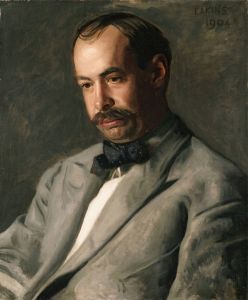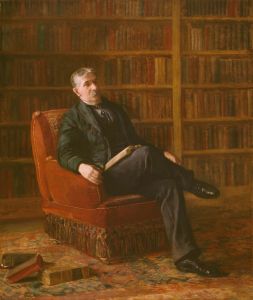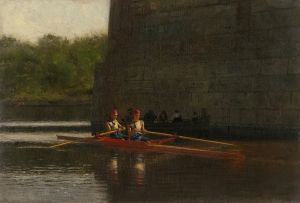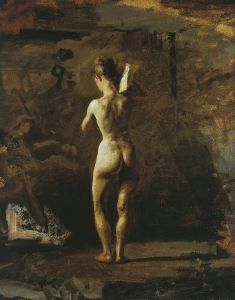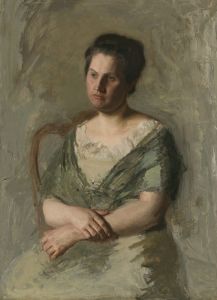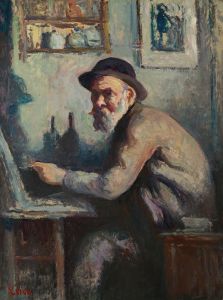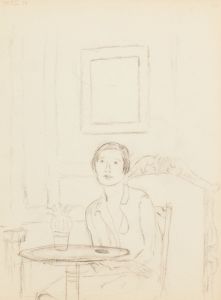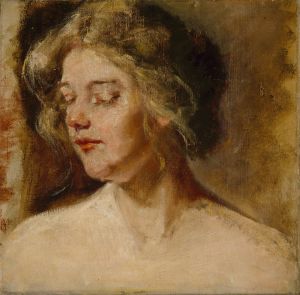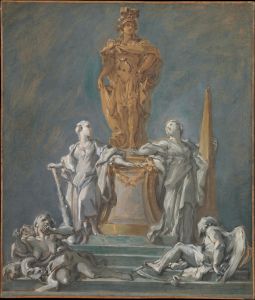
William Rush’s Model
A hand-painted replica of Thomas Eakins’s masterpiece William Rush’s Model, meticulously crafted by professional artists to capture the true essence of the original. Each piece is created with museum-quality canvas and rare mineral pigments, carefully painted by experienced artists with delicate brushstrokes and rich, layered colors to perfectly recreate the texture of the original artwork. Unlike machine-printed reproductions, this hand-painted version brings the painting to life, infused with the artist’s emotions and skill in every stroke. Whether for personal collection or home decoration, it instantly elevates the artistic atmosphere of any space.
"William Rush’s Model" is a painting by the American artist Thomas Eakins, completed in 1908. Eakins, known for his realistic portrayals and dedication to depicting the human form, created this work as part of his exploration of the artistic process and the relationship between artist and model. The painting is a significant piece within Eakins' oeuvre, reflecting his interest in the historical context of American art and his admiration for the sculptor William Rush.
Thomas Eakins was a prominent figure in American art during the late 19th and early 20th centuries. He was renowned for his commitment to realism and his innovative approach to art education, particularly during his tenure at the Pennsylvania Academy of the Fine Arts. Eakins often focused on themes related to the human body, anatomy, and the interplay between art and science.
"William Rush’s Model" depicts a scene from the studio of William Rush, an influential American sculptor from Philadelphia, who is often regarded as one of the first major American sculptors. Rush was known for his public monuments and ship figureheads, and he played a crucial role in the development of American sculpture in the early 19th century. Eakins, a native of Philadelphia himself, held Rush in high esteem and sought to honor his legacy through this painting.
In the artwork, Eakins portrays a female model posing for Rush as he works on a sculpture. The setting is a studio, and the composition includes various elements that highlight the artistic process. Eakins' attention to detail is evident in the careful rendering of the model's form and the surrounding studio environment. The painting captures the dynamic between the artist and the model, a theme that Eakins explored in several of his works.
Eakins' choice to depict a historical figure like William Rush reflects his interest in the history of American art and his desire to connect his own work to a broader artistic tradition. By painting Rush and his model, Eakins not only pays tribute to a fellow Philadelphian artist but also emphasizes the continuity of artistic practice across generations.
The painting is notable for its composition and the way it captures the light and texture of the studio setting. Eakins' use of color and brushwork contributes to the realism of the scene, while his focus on the human figure underscores his commitment to portraying the human form with accuracy and sensitivity.
"William Rush’s Model" is part of Eakins' broader body of work that often included depictions of artists, musicians, and scientists, reflecting his belief in the interconnectedness of art and other disciplines. The painting is housed in the Philadelphia Museum of Art, where it continues to be appreciated for its historical significance and artistic merit.
Overall, "William Rush’s Model" exemplifies Thomas Eakins' dedication to realism and his respect for the artistic traditions that preceded him. Through this work, Eakins not only honors William Rush but also asserts his own place within the lineage of American art.





